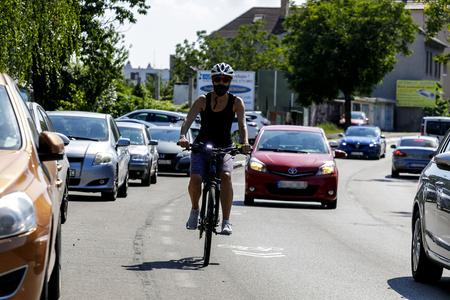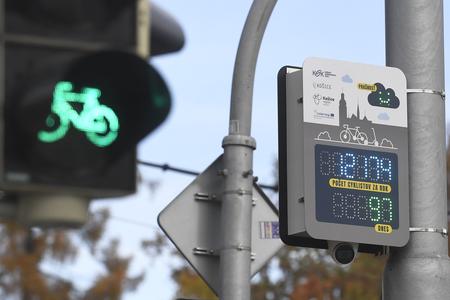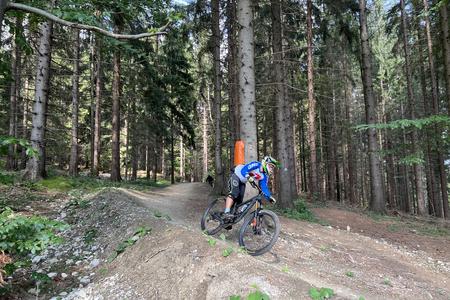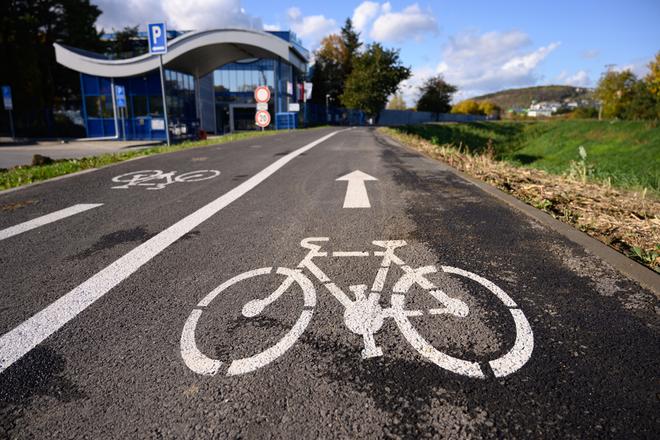The Transport Ministry has failed to meet a major goal in its cycling strategy.
The Supreme Audit Office found in August that cycling transport represented a 5-percent share in total transport in 2021, when the share was already meant to be 10 percent.
“Slovakia is lagging behind in the construction of cycling routes, the importance and benefit of which is growing, not just in relation to the development of the economy through the support of tourism,” said the audit office’s deputy head Jaroslav Ivančo.
The construction of cycling routes, he added, acquires a special dimension in terms of using cycling transport as a supporting factor of traffic mobility.

With the lack of cycling routes and a rising number of cyclists on the roads, traffic accidents involving cyclists are more frequent. In 2021, the police reported 583 such accidents, up 13 percent compared to eight years ago.
Out of a total 39,670 kilometres of local roads in Slovakia, routes for cyclists accounted for 5 percent. Of this, cycling routes intended exclusively for cyclists, or pedestrians, were 1.9 percent.
The audit office said that the public sector should improve the process of funding the construction of cycling routes, coordination, and the legal environment to faster accomplish the goals of the cycling strategy.
No data on funding and cycling routes
Three people at the Transport Ministry, for example, coordinate cycling transport for the entire country. Bratislava has five people.
The audit office further found that goals in the 2013-2020 strategy were assessed in a formal way, meaning that they had been all marked as completed or nearly completed by 2014, though several had not been finished.
Money from the state budget is another problem. It is not allocated for cycling transport on a regular basis even if a mechanism has been in place since 2015. From €10.8 million to €13.6 million should come from the mechanism every year.
Auditors found that more than €12.4 million was allocated once, in 2019.

However, in Slovakia, the primary source of funding for cycling transport remains EU money. Municipalities continue to struggle with drawing EU funds and preparing high-quality projects due to time unpredictability, the audit found.
Moreover, the Transport Ministry did not record any data on how much money was invested in cycling transport and tourism, nor on the length of constructed cycling routes.
According to the Slovak Cycling Club, there are 854 km of cycling routes in towns and 16,190 km of cycling routes used for tourism purposes.
Missing infrastructure impacts people’s decision
The auditors also cited that the existing cycling routes in towns do not form a comprehensive network and are not always connected to cycling routes built by self-governing regions.
Several towns also lack connections to bus and railway stations as well as transfer points. The lack of infrastructure may have a significant impact on residents’ decision to use bicycles as a means of transport, the audit office stressed.

Part of the national cycling strategy involved a plan to create a website with information on cycling transport and cycling tourism, which did not exist when the audit was performed.
Neither is the legislative support for building cycling infrastructure is sufficient, the auditors concluded.


 The opening of a new cycling route between Nitra and its borough of Dražovce on October 25, 2022. (source: TASR - Henrich Mišovič)
The opening of a new cycling route between Nitra and its borough of Dražovce on October 25, 2022. (source: TASR - Henrich Mišovič)